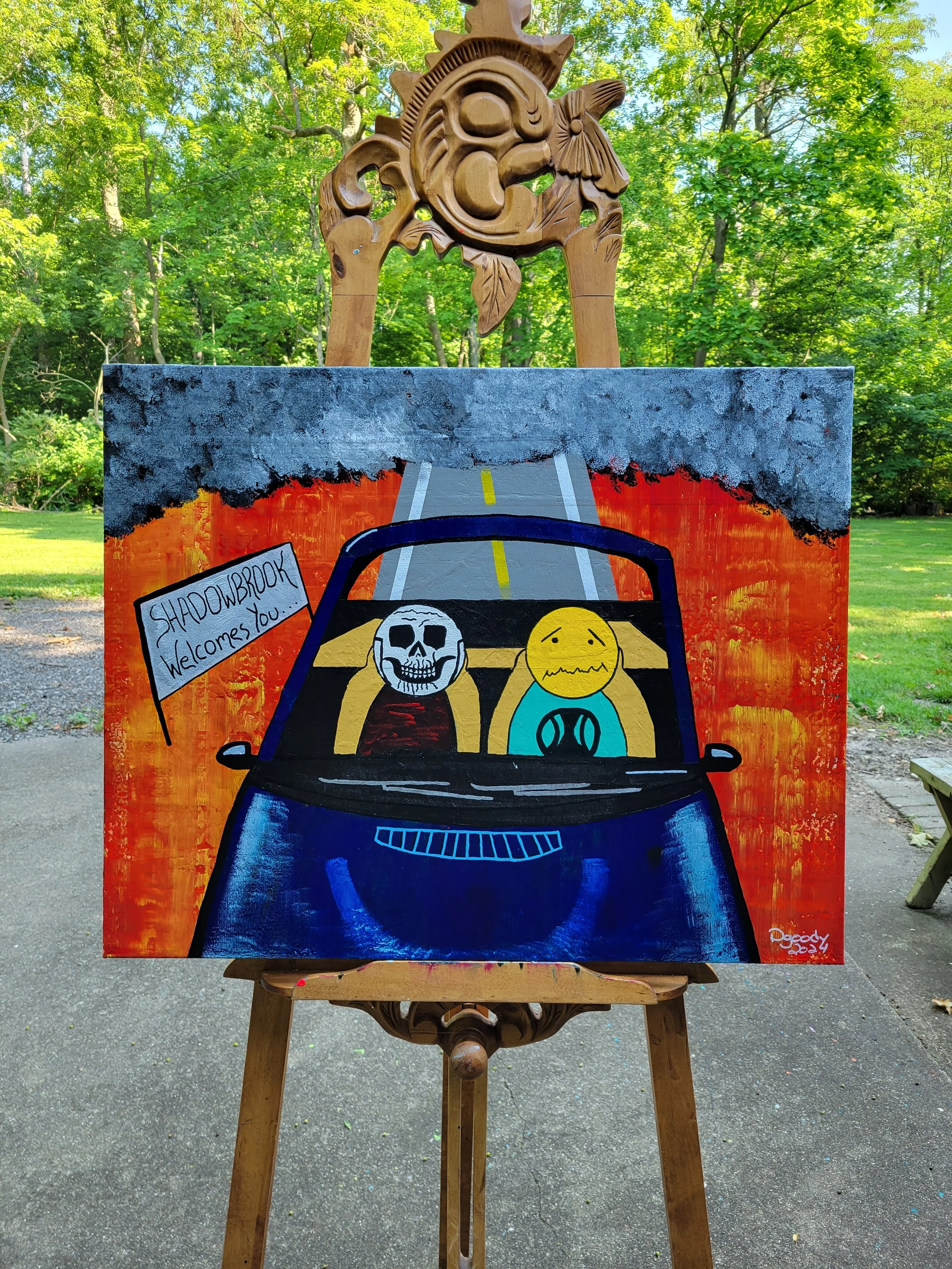Three: Unwelcome Companion
“Unwelcome Companion”, acrylic on 30 × 24 × 1.5 inch canvas
Ansel Kincaid has never lived alone — not truly. Though his apartment in Shadowbrook is quiet, and his phone rarely rings, there is always someone with him. A presence. A voice. A shadow stitched into the seams of his consciousness. He calls it the “unwelcome companion.”
This companion doesn’t shout. It whispers. It doesn’t arrive with fanfare, but with subtlety — a stray thought, a flicker of doubt, a tremor in the gut. It’s the voice that turns a harmless elevator glitch into a vision of a 60-foot plunge. The voice that rewrites a friendly conversation into a social catastrophe. The voice that transforms a minor headache into a terminal diagnosis.
It is not a conscience, nor a hallucination. It is a monsoon of intrusive thoughts — relentless, specific, and insidious. It speaks in hypotheticals but feels like prophecy. It doesn’t ask questions. It delivers verdicts.
Ansel has tried to ignore it. To drown it out with music, with work, with walks through the Misty Woods. But the companion is clever. It adapts. It waits. It knows the quiet moments are fertile ground for play.
Crowded streets become minefields. Social gatherings become interrogations. Even solitude, once a refuge, becomes a trap. The companion thrives in silence, feeding on uncertainty, growing louder when Ansel seeks peace.
But something has shifted.
“Unwelcome Companion”, 30 × 24 × 1.5 inch canvas
Ansel has begun to name the voice. To study its patterns. To challenge its authority. In therapy, he’s learning that the companion is not omniscient — it’s a symptom. A manifestation of fear, trauma, and the brain’s misguided attempts to protect itself.
He’s learning to ask questions in return.
“Is that true?”
“Where’s the evidence?”
“What would I tell a friend who felt this way?”
These questions don’t silence the companion, but they soften its grip. They create space. And in that space, Ansel finds something unexpected: resilience.
He’s starting to see that the companion, for all its cruelty, has also taught him empathy. It has made him attuned to suffering — his own and others’. It has shaped his art, his voice, his capacity to feel deeply. And while he does not welcome it, he no longer pretends it doesn’t exist.
Ansel yearns to understand the origin story of the companion’s voice. To trace its lineage through memory and meaning. He knows the journey will be long, and the road uneven. But he also knows he’s not walking it alone.
Others carry their own companions — different voices, different fears. Through his story, Ansel hopes to reach them. To say: I see you. I hear you. You are not broken. You are not alone.
And so he writes. He sketches. He speaks. Not to banish the companion, but to reclaim the narrative. To prove that even in the presence of fear, one can still choose courage. One word, one thought, one step at a time.

